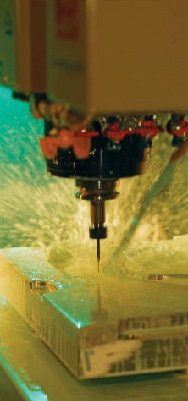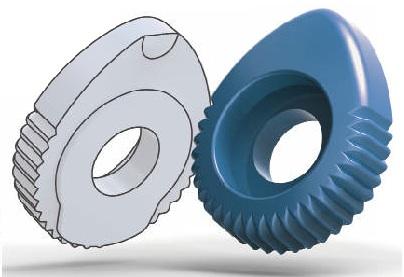Injection Molding: New Twists for a Mainstream Technology
December 6, 2013

When it comes to manufacturing technologies, the choices are many and their number seems to grow daily. They include machining, laser cutting, water cutting, stamping, die casting, and various forms of 3D printing. Despite its age -- well over 100 years -- injection molding is still a "go-to" technology for producing plastic parts. No other technology offers as wide a selection of materials, and the cost per part plummets once a mold has been made.
Molding is a broad term covering a variety of methods including injection, extrusion, compression, roto-molding, silicone molding, and blow molding. Injection molding is among the most flexible of these. It entails forcing molten resin into a mold, allowing it to solidify, and then opening the mold to eject the finished product.
The injected material can be a thermoset, which hardens permanently when heated and cannot be remelted; or thermoplastic, which liquefies when heated or reheated and hardens when cooled. While thermosets are used in a variety of applications, thermoplastic is often preferred for its ease of recycling and the vast variety of thermoplastic resins available.

This article will touch on injection molding's place in the continuum of industrial production processes and its strengths, particularly in terms of expanded material options. It will address how materials, design, moldability, and process details affect injection molded parts and their quality.
The range of thermoplastic materials options is a boon for developers, but it can be bewildering as well. With hundreds of resins to choose from -- both individual polymers and blends -- resin can fit the most specific requirements and become a key aspect of the finished product's performance. Characteristics like strength, flexibility, color, or transparency may be simple to identify, but resins may also be chosen for other characteristics.
Depending on the application, resins can also be selected for their resistance to chemicals or UV light, response to temperature and humidity, or electrical properties. If parts include bearing surfaces, resin may be chosen for their lubricity, and if parts will be subject to rough handling, abrasion resistance may be critical.
Parts may have cosmetic needs like the ability to hold a high polish, and can also include features like living hinges, which are designed to be flexed repeatedly without breaking. Moldability varies among resins. Some flow easily through narrow areas that would be difficult for other resins to traverse. In some cases, the solution to this variability is an altogether different resin; in others the answer is to keep the same resin but change the design of the part. Of course, there's also cost to consider, which becomes increasingly important as the size of the part and the production volume increase.
Even these choices would be relatively simple if a part only had to meet one criterion. But in real-world design that's rarely the case. One part might have to be both strong and transparent, while another must be flexible and able to withstand contact with solvents.
With thousands of materials to choose from, virtually any imaginable combination of characteristics is available in some resin or blend; the challenge is in finding it. The MatWeb online materials database provides data on more than 50,000 thermoplastic materials. Without having to register, users can search for resins by up to three out of several dozen possible properties and see detailed spec sheets on resins that meet those criteria. Free registration allows more advanced searches. Narrowing down a list of materials begins with listing your requirements in order of priority and using those criteria to reduce the list of candidates to a workable number. Final choices may require functional testing of prototypes. For specialized material needs, compounders like RTP compound custom variations of dozens of basic resins.
Clearly, the needs of the product itself will guide the design of a plastic part, but both the material being molded and the molding process itself can impact design choices. A stronger material can allow features to be smaller or thinner. A filled material, however, like glass-filled nylon, can greatly improve strength but may impact a part's cosmetics, increase the likelihood of warp, or cause flow problems around part features like through holes. The flexibility of a resin will affect the dimensions of moving parts like clips or hinges, and can even affect whether such features will work at all.
Final choices regarding design and material often depend on the testing of prototypes, but preliminary decisions can often be made before prototyping even begins. Finite element analysis (FEA) software, available in standalone form or incorporated into design software, allows simulation and virtual testing of a design in a specific material. The results can suggest design changes or material choices, speeding up the whole development process.
About the Author(s)
You May Also Like

.jpg?width=300&auto=webp&quality=80&disable=upscale)

